A common question asked by new users is “what’s the difference between hemp oil and CBD oil?” It’s understandably confusing since these terms are often used interchangeably. The lack of uniformity in product labeling only adds to the confusion. Our goal is to explain the difference so you’ll know whether a product actually CBD or not.
Here are some common terms that you’ll see when you start researching CBD products online: hemp oil, hemp seed oil, CBD oil and hemp extract.
What is Hemp Oil?
Hemp oil is the most broad of these terms. There are some products labeled hemp oil that have CBD in them and many that do not. To know whether something labeled hemp oil contains CBD, you need to understand the difference between hemp seed oil and CBD oil.
What is Hemp Seed Oil?
Basically, hemp seed oil is equivalent to olive oil, coconut oil and grapeseed oil. It’s good for cooking and can make an excellent salad dressing. But it contains no CBD and is generally not considered to be medicinal. The seeds of the cannabis plant, whether it’s hemp or marijuana, don’t produce any CBD. So if you’re looking for something with CBD in it, hemp seed oil is not what you want.
How do you know if a product labeled hemp oil is just hemp seed oil? The product label will usually just describe the product as “unrefined cold-pressed hemp seed oil.” The most obvious clues are the cheap price and the large bottle. Nutiva is a popular brand of hemp seed oil that is sold on Amazon and in grocery stores. It sells for less than $20 for a 24 ounce bottle. Most CBD tinctures come in 1 ounce (30 milliliter) bottles and cost considerably more than $20.
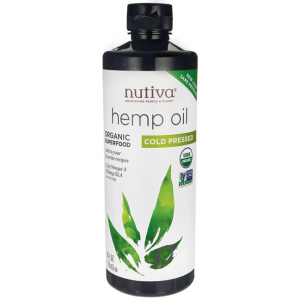
What is CBD Oil?
CBD oil is extracted from the flower, stems, stalks and other parts of the cannabis plant. Unfortunately, it’s typically not easy to know if a product contains CBD just by looking at its label. Some products containing CBD don’t mention it anywhere on the label. That’s because saying CBD on the label or website can increase the company’s risk associated with FDA regulations.
The best way to know whether a product contains CBD is to look at third-party lab reports. These independent lab results are posted by all reputable CBD brands. They will tell you exactly what cannabinoids and terpenes are in the product and at what levels. They will also show you that the product has passed testing for potentially dangerous heavy metals, pesticides and residual solvents.
As an example, here is the cannabinoid profile page from a recent lab report posted by NuLeaf Naturals. We’ve highlighted the line that shows the product was tested to contain 61.77 milligrams of CBD per milliliter. If the bottle size is 30 milliliters, then the total bottle has a total of 1,853 milligrams of CBD (61.77mg x 30ml).

Understanding all of the numbers can be confusing. So your takeaway should just be that you can confirm that a product actually has CBD in it by reviewing the third-party lab reports.
What is Hemp Extract?
Some products that contain CBD list the primary ingredient as hemp extract. To add to the confusion, they may also list hemp seed oil, olive oil or MCT oil as ingredients. Those other oils listed are the “carrier oils.” Carrier oils dilute the concentrated hemp extract (which includes CBD) to improve the taste of the product.
The omission of CBD from the label can lead some people to mistakenly think there isn’t any CBD in the product. But the reality is that many of them do. Again, the best way to confirm this is to check the third-party lab reports. CBD will be listed in the cannabinoid profile if the product contains it.
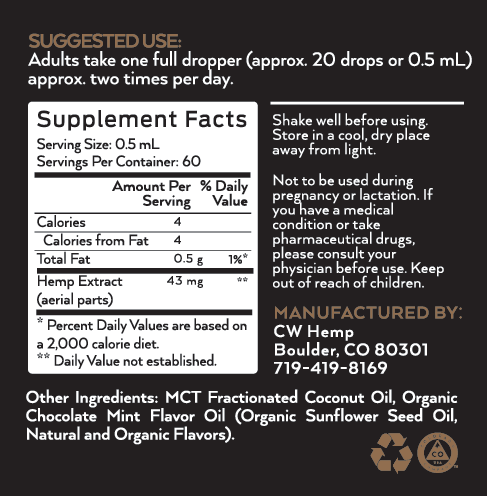
Summary
As of now, there aren’t any standard CBD label requirements. Some brands clearly label their products as containing CBD whereas others do not. This can make it confusing for you to know whether a product contains CBD.
Generally, products that only list hemp oil or hemp seed oil as the ingredients do not have any CBD in them. Products that list hemp extract on the label typically do. You can should always check the third-party lab reports to confirm that a product has CBD in it.
Final Thoughts
Hopefully you now have a better understanding of the difference between hemp oil and CBD oil. If you’re wanting to buy a product that definitely has CBD in it, here are 3 suggestions:
1. Look at third-party lab reports to confirm that it contains CBD.
2. Buy a CBD product from one of the companies on our list of the best CBD oil brands. Products from all of these companies include CBD. They’ve also been vetted for product quality, customer service and feedback from customers.
3. Is the CBD content still not clear to you? Reach out to the company selling the product and specifically ask them if their product contains CBD or not.

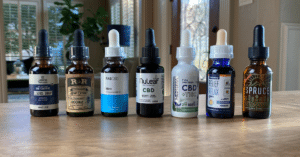

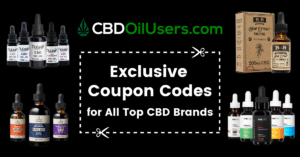
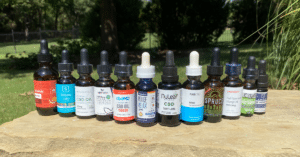

12 Responses
I’ve seen companies say 33.3mg of hemp extract but 30 mg/ml of CBD. I don’t want to state company name but this company is very reputable in the broad spectrum world.
Thanks for all this info! I didn’t see anything regarding cream formulations. Do the reputable dealers make this form for skin conditions? Perhaps there are other formulations for the skin for, say, acne? Of course, I’m not asking for a cure for acne. Please advise. Thank you a zillion times over for your educating me.
Excellent read!
I love this site. Great information on everything and it helped me a lot. Thanks!
I’m confused about the label on a Lazarus Naturals CBD Tincture. It states 15mg of CBD per milliliter. But the ingredient list is organic Hemp seed oil, fractionated coconut oil, hemp extract, and organic avocado oil. In this list where is the “CBD” coming from?
Hemp extract is the general term often used to describe what contains the CBD and other cannabinoids and terpenes.
Oral Tincture: I see that one company’s product states 1,000 mg of CBD on their label and another company states 3,000 mg of CBD. Does this mean the product labeled with 3,000 mg of CBD has more CBD in it’s product than the 1,000 mg product? If so, does that make the product with 3,000 mg of CBD more effective?
Mike, the answer depends on the size or amount of oil in the bottle. If the bottle is the same size and one is 1000mg of CBD and the other is 3000 mg of CBD, then it is 3x more “potent”. So you would need less to get the dose of say 50 mg. If the bottle is 3x larger, then the dosage would be the same for either one as they are equal, you just get more. You really have to read the labels carefully to distinguish between brands, dosages, amount of CBD, etc. The other thing to look for is the amount of actual CBD. Sometimes it will say 1000 mg but not 1000mg of CBD. So beware and read carefully.
Thank you very much this was very good info it really helps.
Thank you so much. I’m a beginner CBD user. I have 5 diagnosis, each very painful. I am grateful for all the info I can handle and this info has opened my eyes. Unfortunately, I already ordered online, but many thanks again.
Thank you for clearing this up! Very helpful!!
Great article, Sarah. Very informative and a good definition as to why some CBD companies don’t post certain information. I hate that the FDA may eventually require us to get a script to purchase.